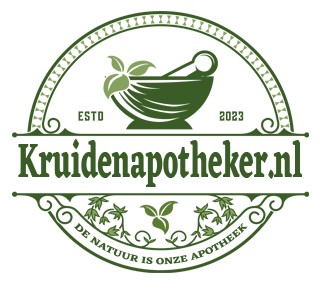Natural Science Hub Search function
Type your keywords and we will find the results

-
Red propolis ameliorates ischemic-reperfusion acute kidney injury.
- Date:
- Author: da Costa MF | Libório AB | Teles F | Martins Cda S | Soares PM | Meneses GC | Rodrigues FA | Leal LK | Miron D | Silva AH | Martins AM |
Acute kidney injury (AKI) remains a great problem in clinical practice. Renal ischemia/reperfusion (I/R) injury is a complex pathophysiological process. Propolis is a natural polyphenol-rich resinous substance collected by honeybees from a variety of plant sources that has anti-inflammatory and anti-oxidative properties. Red propolis (RP) protection in renal I/R injury was investigated.
Read More on PubMed -
The leading cause of cardioembolic stroke is atrial fibrillation (AF), which predisposes to atrial thrombus formation. Although rheological alterations promote a hypercoagulable environment, as yet undefined factors contribute to thrombogenesis. The role of the endocardium has barely been explored. To approach this topic, rapid atrial pacing (RAP) was applied in four pigs to mimic AF. Left and right endocardial cells were isolated separately and their gene expression pattern was compared with that of four control pigs. The AF-characteristic rhythm disorders and endothelial nitric oxide synthase down-regulation were successfully reproduced, and validated RAP to mimic AF. A change was observed in the transcriptomic endocardial profile after RAP: the expression of 364 genes was significantly altered (p<0.01), 29 of them having passed the B>0 criteria. The left atrial endocardium [325 genes (7 genes, B>0)] was largely responsible for such alterations. Blood coagulation, blood vessel morphogenesis and inflammatory response are among the most significant altered functions, and help to explain the activation of coagulation observed after RAP: D-dimer, 0.49 (1.63) vs. 0.23 (0.24) mg/l [median (interquartile range)] in controls, p=0.02. Furthermore, three genes directly related to thrombotic processes were differentially expressed after RAP: FGL2 [fold change (FC)=0.85; p=0.007], APLP2 (FC=-0.47; p=0.005) and ADAMTS-18 (FC=-0.69; p=0.004). We demonstrate for the first time that AF induces a global expression change in the left atrial endocardium associated with an activation of blood coagulation. The nature of some of the altered functions and genes provides clues to identify new therapeutic targets.
Read More on PubMed -
Recent studies have demonstrated that transcription factor nuclear factor (NF)-κB inhibition may contribute to the protective anti-inflammatory actions of andrographolide, an abundant component of plants of the genus Andrographis. However, the precise mechanism by which andrographolide inhibits NF-κB signaling remains unclear. We thus investigated the mechanism involved in andrographolide suppression of NF-κB signaling in rat vascular smooth muscle cells (VSMCs) exposed to proinflammatory stimuli, LPS, and IFN-γ. Andrographolide was shown to suppress LPS/IFN-γ-induced inducible nitric-oxide synthase and matrix metalloprotease 9 expression in rat VSMCs. Andrographolide also inhibited LPS/IFN-γ-induced p65 nuclear translocation, DNA binding activity, p65 Ser(536) phosphorylation, and NF-κB reporter activity. However, IKK phosphorylation and downstream inhibitory κBα phosphorylation and degradation were not altered by the presence of andrographolide in LPS/IFN-γ-stimulated VSMCs. These andrographolide inhibitory actions could be prevented by selective inhibition of neutral sphingomyelinase and protein phosphatase 2A (PP2A). Furthermore, andrographolide was demonstrated to increase ceramide formation and PP2A activity in VSMCs and to inhibit neointimal formation in rat carotid injury models. These results suggest that andrographolide caused neutral sphingomyelinase-mediated ceramide formation and PP2A activation to dephosphorylate p65 Ser(536), leading to NF-κB inactivation and subsequent inducible nitric-oxide synthase down-regulation in rat VSMCs stimulated by LPS and IFN-γ.
Read More on PubMed -
Nitric oxide donors or nitrite counteract copper-[dithiocarbamate](2)-mediated tumor cell death and inducible nitric oxide synthase down-regulation: possible role of a nitrosyl-copper [dithiocarbamate](2) complex.
- Date:
- Author: Rhenals MV | Strasberg-Rieber M | Rieber M |
In contrast to other metal-dithiocarbamate [DEDTC] complexes, the copper-DEDTC complex is highly cytotoxic, inducing oxidative stress, preferentially in tumor cells. Because nitric oxide (NO) forms adducts with Cu[DEDTC](2), we investigated whether NO donors like S-nitroso-N-acetyl penicillamine (SNAP) or sodium nitroprusside (SNP), and nitrite, a NO decomposition product, modulate Cu[DEDTC](2) cytotoxicity against human tumor cells. We show that apoptosis-associated PARP cleavage and inducible nitric oxide synthase (iNOS) down-regulation induced by nanomolar Cu[DEDTC](2), are counteracted by 50 muM SNAP, SNP, or CoCl(2), an inducer of hypoxia and NO signaling. Nitrite was stochiometrically effective in antagonizing Cu[DEDTC](2) cytotoxicity and inducing shifts in the absorption spectrum of the binary complex in the 280 and 450 nm regions. Subtoxic concentrations of Cu[DEDTC](2) became lethal when tumor cells were pretreated with c-PTIO, a membrane-impermeable scavenger for extracellular NO. Our results suggest that: (a) reactive oxygen species induced by Cu[DEDTC](2) are scavenged by nitrite released from NO, (b) the extent of lethality of Cu[DEDTC](2) is dependent on the reciprocal formation of an inactive ternary Cu[DEDTC](2)NO copper-nitrosyl complex.
Read More on PubMed




